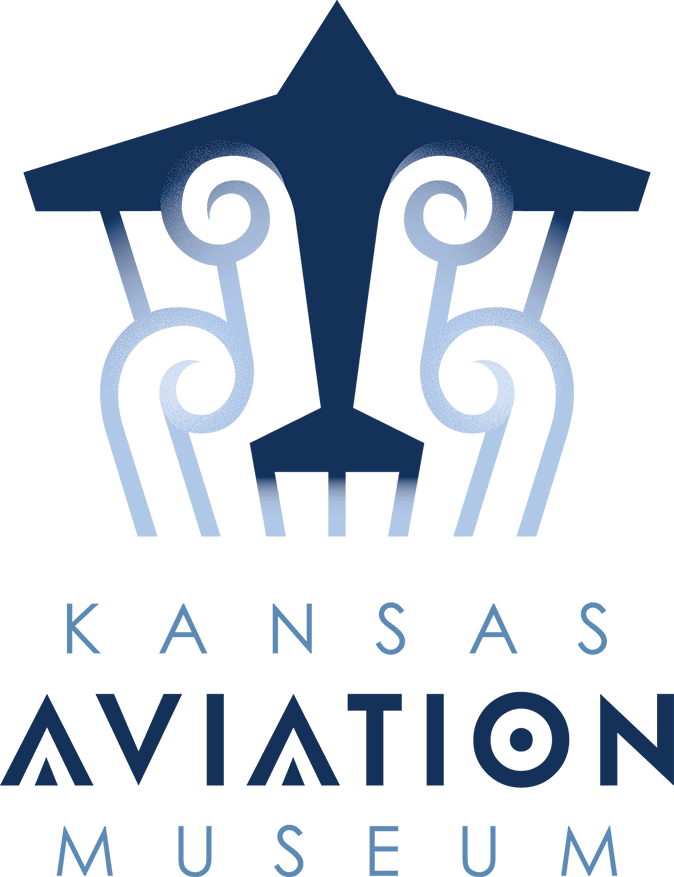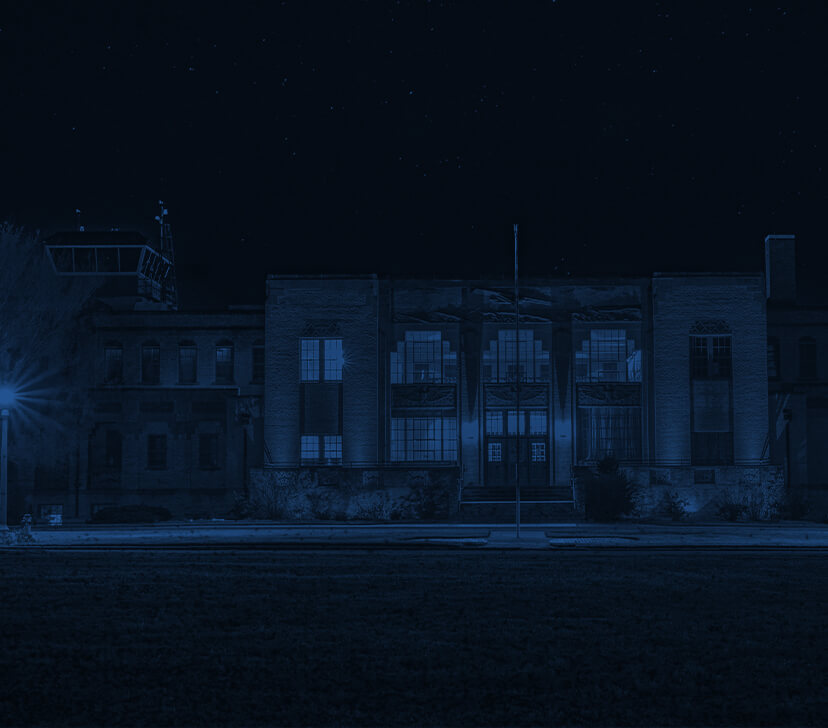Within five years of the Wright brothers’ 1903 flight at Kitty Hawk, Kansans seek to enter the aviation age with craft of their own design. Entrepreneurial and experimental spirits ride high as daring pioneers seek their fortunes in the wide open prairie skies.
The first successful Kansas plane, the 1910 Longren Flyer, is built in Topeka. It is quickly followed by a wide variety of craft developed by more than 60 manufacturers throughout the state. The nation’s first airplane built strictly for commercial purposes, the Laird Swallow, is created in 1920 by the Wichita team of Laird, Moellendick and Burke.
They are joined by such pioneers as Lloyd Stearman, the Rawdon brothers, Al Mooney, Walter and Olive Ann Beech, Clyde Cessna, Bill Lear and many others. Whether they build one plane or thousands, they all add their genius to a vital new industry burgeoning in the center of the nation.
Even with that early start, practical and widespread aviation is a relatively recent phenomenon. Many of aviation’s artifacts are scarcely a half-century old, yet they are irreplaceable monuments to the industry’s pioneering days.
1900
Three years before the Wright brothers successfully take off at Kitty Hawk, N.C., Carl Dryden Browne promotes commercial airplane manufacturing in Freedom, Kansas. He builds a factory and a prototype, but never flies his aircraft. The factory closes in 1902.
1909
William Purvis and Charles Wilson, two railroad mechanics in Goodland, quit their jobs to work on a rotary-winged aircraft. The venture fails, but their design is believed to be the first rotary-winged aircraft ever patented, a predecessor to the helicopter.
1910
The first successful Kansas plane, the 1910 Longren Flyer, is built in Topeka by Albin Longren. He first flies the plane in 1911.
1911
Clyde Cessna builds a plane near Rago, Kan., and puts on a public flight at the Salt Plains near Enid, Okla. His first successful flight occurs in December, following almost a dozen failed attempts.
1916
Cessna moves his airplane manufacturing business from his farm in Kingman County to the Jones Auto factory in north Wichita.
1917
Cessna builds “The Comet,” the first plane known to have been completed in Wichita.
1919
Two aircraft companies are formed in Wichita, Wichita Aeroplane Service Co. and the Wichita Aircraft Co. J.M. Moellendick, oil tycoon, invests in the Wichita Aircraft Co. Upset with the management, he persuades William Burke from Okmulgee, Okla., to take over. Burke flies to Chicago, meets with E.M. “Matty” Laird, and proposes that the three form a company in Wichita to build planes.
1920
E.M. Laird Airplane company is formed in Wichita. The staff includes Matty Laird, Billy Burke and Jake Moellendick. The group’s first airplane, the Wichita Tractor, takes flight April 8. A young man observing the test flight, William Lassen, is believed to have remarked, “She flies like a swallow, boys.” From that point on, the plane is known as the Laird Swallow.
1921
State census shows 21 plane manufacturers in the state.
1923
Laird returns to his hometown, Chicago. By now, Lloyd Stearman and Walter Beech are working for Moellendick at Swallow.
1924
In December, Stearman and Beech leave Swallow over a disagreement with Moellendick.
1925
Travel Air is formed by Cessna, Beech and Stearman. Two years later, Cessna and Beech split after a disagreement over whether to build cantilevered wings.
1926
Stearman forms his own company in California and a year later moves back to Wichita.
1927
Clyde Cessna forms Cessna Aircraft Co.
1928
Wichita begins promoting itself as “The Air Capital of the World.”
1930
Travel Air merges with Curtiss Wright; United Aircraft and Transport, which includes Boeing, takes over the Stearman Corporation.
Al Mooney forms the Mooney Aircraft Corp. in Wichita.
1932
Walter Beech and business-savvy wife Olive Ann start Beech Aircraft Co. The first Beechcraft, the classic Model 17R Staggerwing, makes its initial flight Nov. 4.
1935
Cessna model C-134 (later named the Airmaster) starts production, considered the “world’s most efficient airplane.”
1941 to 1945
Aircraft companies enjoy a boom because of World War II. Tens of thousands of aircraft workers are employed in Kansas plants, most of them in Wichita. Boeing builds B-29 bombers. Beech (C-45 from the Beech 18 among others) and Cessna (T-50 Bobcat, “Bamboo Bomber” and others) build military aircraft. Many companies work together to produce gliders.
1944
Boeing Wichita is the first manufacturing facility in the United States to use mass transportation for workers. Buses take people from downtown Wichita, Arkansas City, Winfield, Salina, Ponca City and Newkirk to Boeing and back.
1945
Culver Aircraft Corp. of Wichita operates in a complete blanket of secrecy for the duration of World War II. It builds radio-controlled drones.
Postwar Layoffs: Aircraft factories lay off 16,000 people at Boeing in one day.
First flight of the Beechcraft Bonanza.
1946
In 1946, when kid-genius Al Mooney re-enters the manufacturing scene at age 40, he and Charles G. Yankey form Mooney Aircraft Inc.
1948
Boeing Wichita conducts initial aerial refueling tests with B-29s.
1951
The first U.S. swept wing jet bomber, Boeing B-47 Stratojet, rolls off the Wichita production lines.
In January, the United States Air Force announces that it intends to establish a very large air force base at the Wichita municipal airport. The base will have a contingent of 6,500 or more people. The USAF plans to use the base for Boeing B-47 crew training.
1954
Boeing begins production on the B-52 bomber. B-52s still fly active missions today.
Construction begins on what becomes Mid-Continent Airport west of Wichita. Later in the year, all non-military traffic ends at the Wichita municipal airport and moves to Mid-Continent. Mid-Continent celebrates its 50th anniversary in April 2004.
1956
Cessna’s Model 172 sets world sales records. More than 14,000 are built in 13 years.
1962
Bill Lear moves from Switzerland to Wichita to design, build and market a business jet. The first Learjet flight is Oct. 7, 1963.
1969
The first flight of a Cessna business jet prototype, which becomes the Citation.
1979
Beech Aircraft is acquired by the Raytheon Company.
1983
Beech announces plans for all-composite Starship. Certification and marketing problems derail the Starship; production stops at about 50 delivered.
1986
After 35,000 model 172s are built, Cessna halts production, due primarily to soaring product liability costs.
1986
General Dynamics Corp. buys Cessna.
1990
Bombardier Inc. purchases Learjet Inc., the first Kansas business jet maker.
1992
Textron Corp. acquires Cessna from General Dynamics.
1994
Beech Aircraft, after 62 years, is renamed Raytheon Aircraft Co.
1996
Cessna Chairman Russ Meyer is inducted into the Kansas Aviation Hall of Fame.
Cessna rolls out first 172 Skyhawk produced at new facility in Independence, Kan.
Raytheon Aircraft introduces the Hawker Horizon.
Boeing launches its first complete one-piece fuselage for the Next-Generation 737-700.
Raytheon is awarded the Joint Primary Aircraft Training System (JPATS) acquisition and support contracts, estimated to be worth $4 billion.
1997
A 98,000-square-foot expansion of the Bombardier Flight Test Center opens.
Boeing merges with McDonnell Douglas Corporation.
The Republic of Singapore Air Force chooses McConnell Air Force Base over two other American bases to train KC-135 aircrews and maintenance.
2002
Boeing delivers the 150th T-45 Goshawk training aircraft, a T-45C, to the U.S. Navy.
Raytheon is awarded $74 million option on U.S. Army Live Training contract.
As part of a plan to reduce and consolidate the Air Force’s B-1 fleet, McConnell Air Force Base’s B-1B Lancer Bombers are transferred to other bases.
McConnell’s 184th Bomb Wing takes on a new mission flying KC-135s and is officially designated the 184th Air Refueling Wing.
2005
Boeing delivers its last 757 passenger airplane, concluding a 23-year production run. It is the 1,050th Boeing 757, with more than 1,030 still in service.
The Boeing 777-200LR Worldliner establishes a new world record for nonstop distance by a commercial airplane, flying 11,664 nautical miles in 22 hours and 42 minutes from Hong Kong to London.
The Virgin Atlantic Globalflyer, piloted by Steve Fossett and designed by Burt Rutan’s Scaled Composites, launches from a Salina, Kan., airport for an around-the-world trip, landing 3 days later without refueling. Kansas State University at Salina acts as Mission Control for the record-setting event.
Onex acquires the Wichita/Tulsa division of Boeing Commercial Airplanes, which becomes Spirit AeroSystems.
2006
The 5,000th 737 comes off the production line. The 737 is the most-produced large commercial jet airplane in aviation history.
2007
Onex and Goldman Sachs acquire Raytheon Aircraft Company, which is renamed Hawker Beechcraft.



